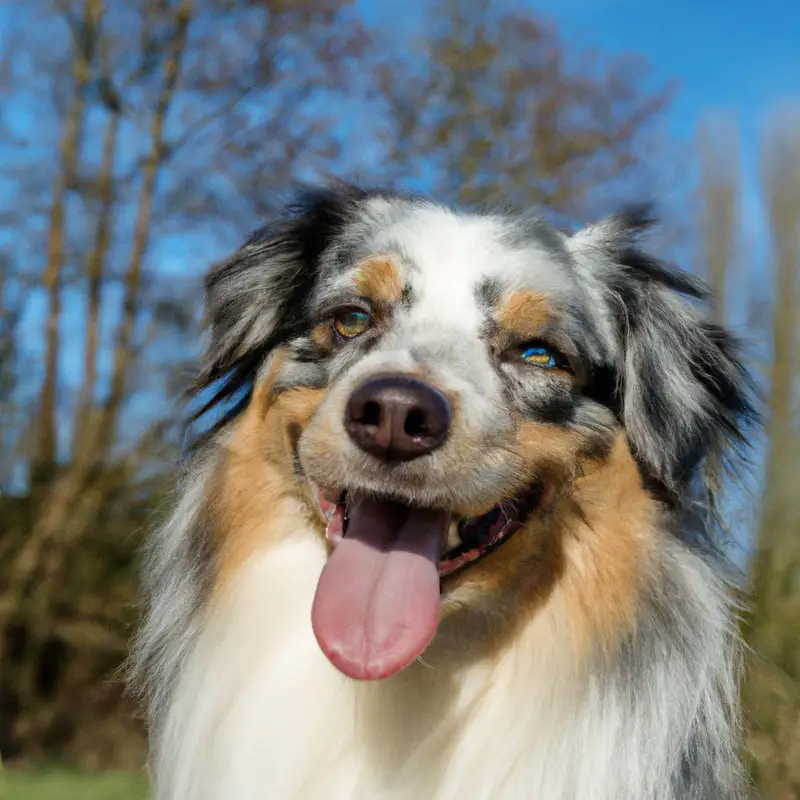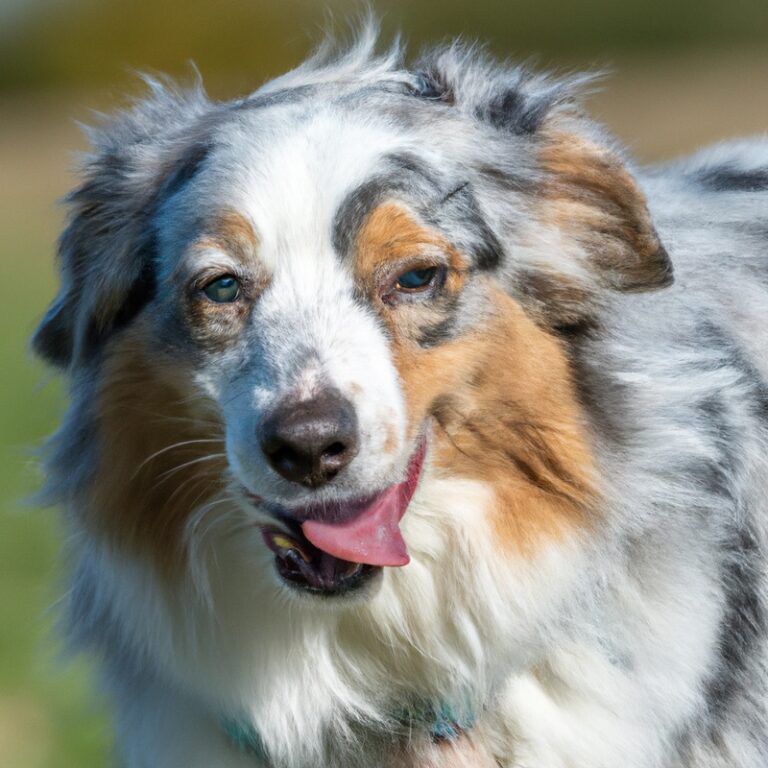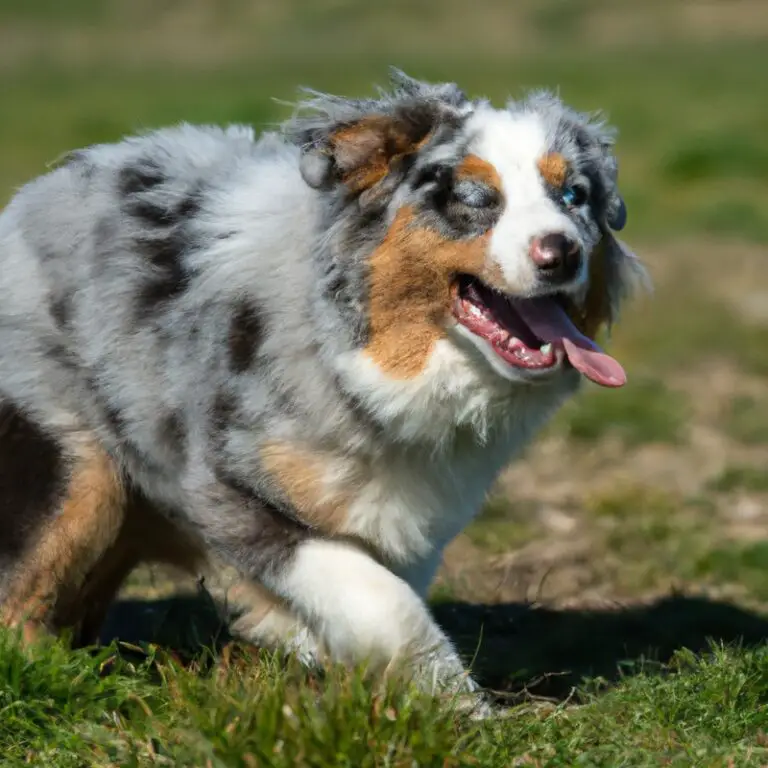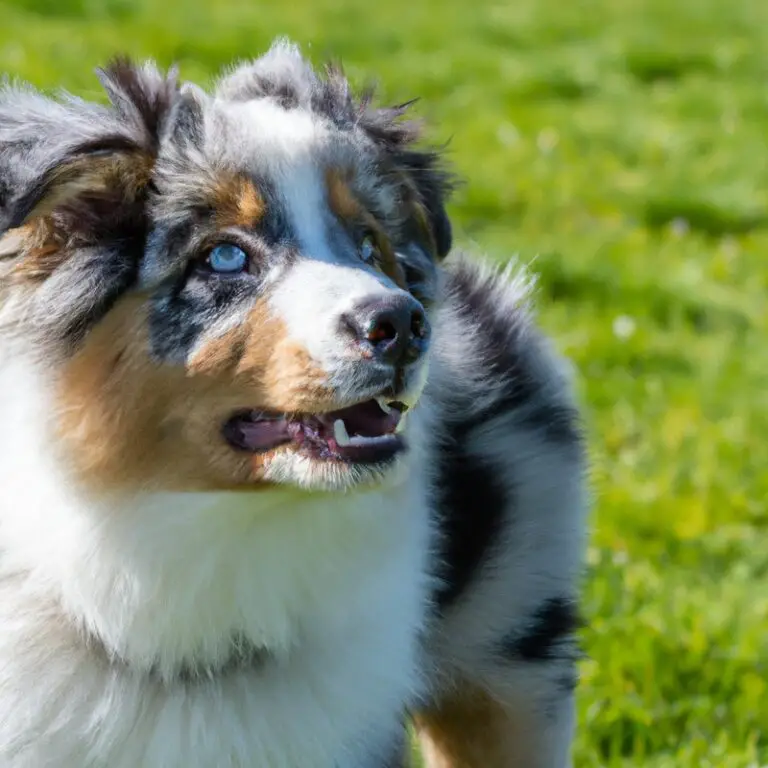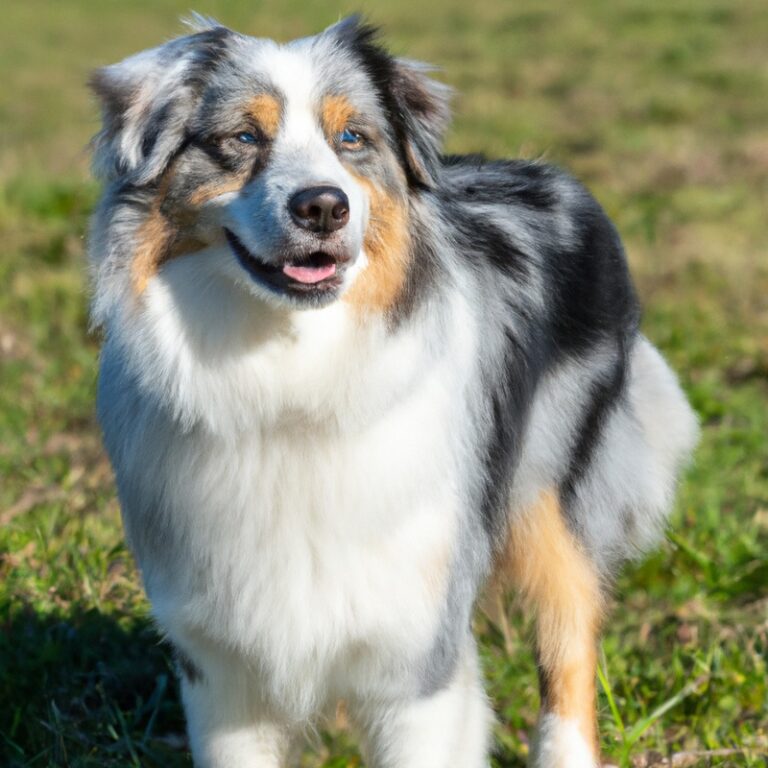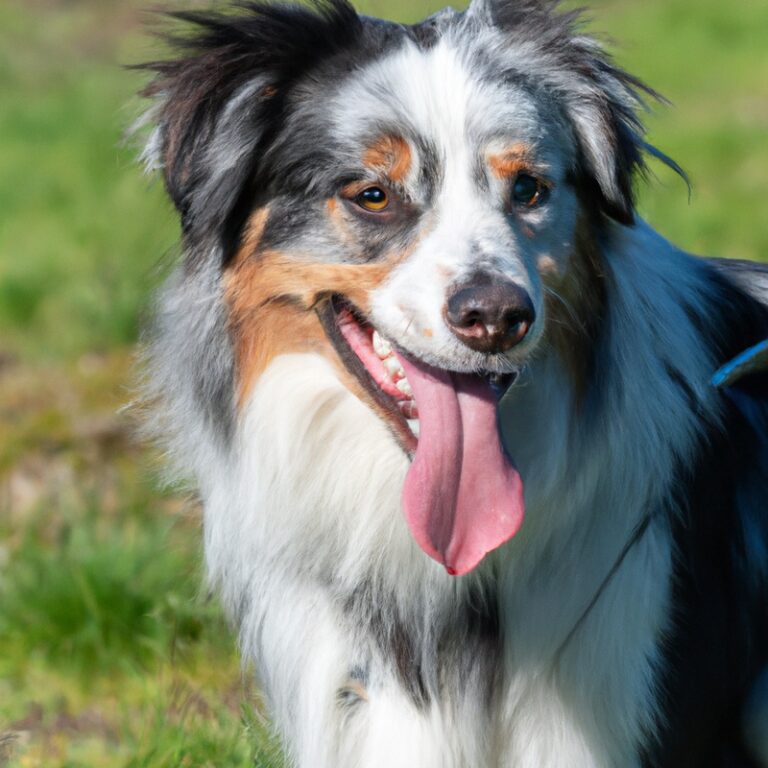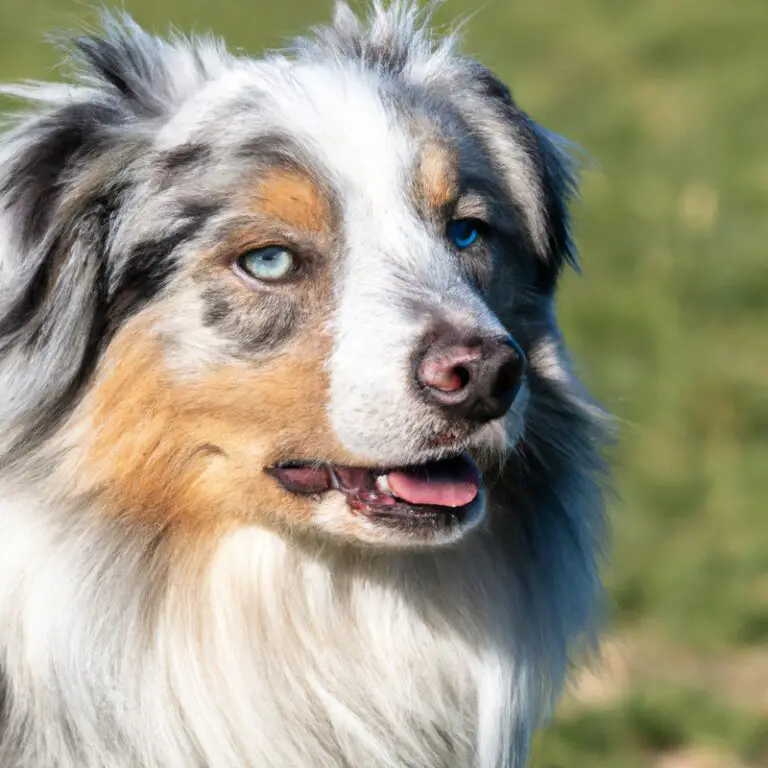Can Australian Shepherds Be Trained To Be Search And Rescue Dogs In Urban Areas?
Key Takeaways:
- Australian Shepherds can be successfully trained as search and rescue dogs in urban areas.
- Their intelligence, agility, and trainability make them well-suited for this role.
- Proper training and socialization are crucial for making them effective search and rescue dogs.
- Australian Shepherds can excel in scent detection, tracking, and obstacle negotiation in urban search and rescue operations.
Have you ever witnessed the incredible bond between humans and their canine companions? It’s truly remarkable how these four-legged heroes can save lives in the most challenging situations.
Today, I want to explore the possibility of training Australian Shepherds to become search and rescue dogs in urban areas.
As an expert in the field, I’ve witnessed firsthand the remarkable qualities that make Australian Shepherds suitable for this demanding work. From their intelligence and agility to their unwavering loyalty, these dogs possess the potential to be extraordinary partners in urban search and rescue operations.
Join me as we delve into the training requirements, specialized skills, and challenges associated with preparing Australian Shepherds for urban search and rescue missions.
| Criteria | Yes | No |
|---|---|---|
| Size | Large dogs, suitable for search and rescue | Small size might limit their effectiveness |
| Temperament | Intelligent, trainable, and eager to please | Independence may hinder their focus on tasks |
| Energy level | High energy, ideal for search and rescue work | May require more exercise and mental stimulation |
| Physical abilities | Agile and athletic, capable of navigating obstacles | May struggle with certain physical tasks |
| Urban environment | Adaptable to urban settings with proper training | Might find the noise and chaos challenging |
| Training requirements | Dedicated training and socialization needed | Require consistent and specialized training |
| Success rate | Can excel in urban search and rescue operations | Not the most common breed for this specific purpose |
The Role of Australian Shepherds in Search and Rescue Operations
Overview of Australian Shepherds as Working Dogs
Australian Shepherds are highly versatile and excel in various working roles. As working dogs, they are known for their intelligence, agility, and endurance.
Australian Shepherds are often used in search and rescue operations, herding livestock, and as assistance dogs for individuals with disabilities.
They have a strong instinct to work and are quick learners, making them excellent candidates for training in different tasks. Their instinct to please their handlers and their ability to quickly adapt to new situations make them valuable assets in many working environments.
Australian Shepherds are highly energetic and require regular exercise and mental stimulation to thrive in their roles as working dogs.
With the right training, socialization, and care, Australian Shepherds can excel in various working tasks and become loyal and reliable partners in their respective fields.

Characteristics That Make Australian Shepherds Suitable for Search and Rescue Work
Australian Shepherds possess several key characteristics that make them well-suited for search and rescue work. Firstly, their high intelligence allows them to quickly learn and understand complex tasks.
This intelligence also helps them problem-solve and think critically in challenging situations.
Additionally, Australian Shepherds have a strong work ethic and are highly motivated, making them eager to complete tasks and find missing individuals. Their agility and athleticism enable them to navigate difficult terrain, while their strong sense of smell allows them to track scents over long distances.
Furthermore, Australian Shepherds are highly trainable and responsive to commands, which is crucial in search and rescue operations.
Finally, their friendly and gentle nature makes them well-suited for working with both handlers and the individuals they are searching for. Overall, the unique combination of intelligence, motivation, agility, scenting ability, trainability, and sociability makes Australian Shepherds an excellent choice for search and rescue work.
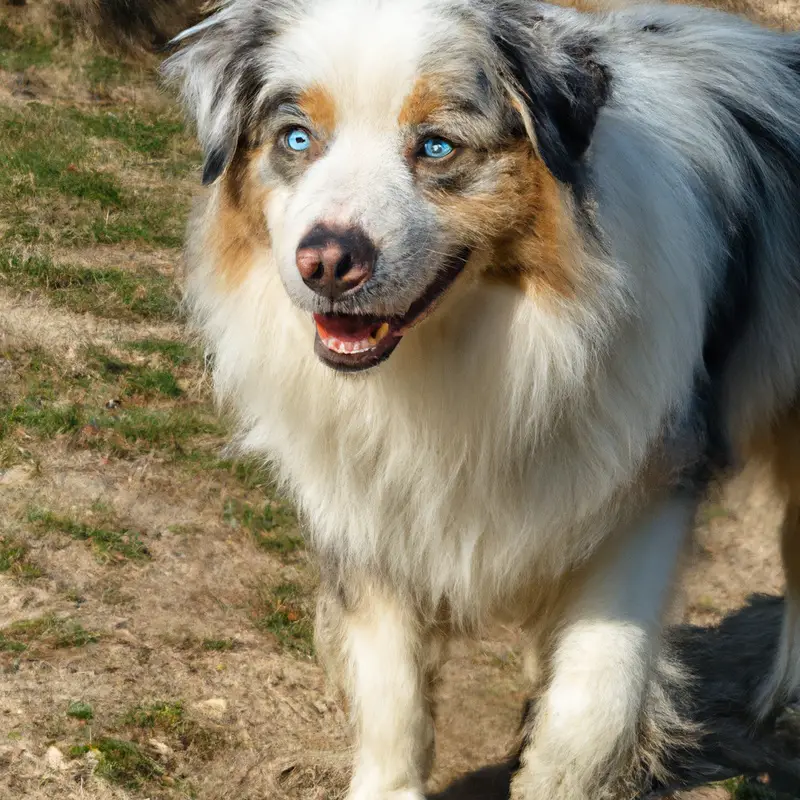
Training Requirements for Australian Shepherds in Search and Rescue
Training requirements for Australian Shepherds in search and rescue are rigorous and specific. These intelligent and energetic dogs require extensive socialization and obedience training to ensure they can confidently navigate complex urban environments.
Additionally, they must be trained in specialized skills such as scent discrimination and area search techniques.
Regular training sessions, exposure to various scenarios, and ongoing education are essential to maintain their skills and ensure they can effectively assist in search and rescue operations. It is important to choose a reputable certification organization and follow their testing and evaluation criteria to ensure that Australian Shepherds meet the required standards for search and rescue work.
Socialization and Obedience Training for Australian Shepherds
Socialization and obedience training are crucial for Australian Shepherds to excel in search and rescue work. This training helps them develop good behavior, adaptability, and confidence in various social situations.
It involves exposing them to different people, animals, environments, and stimuli to ensure they remain calm and focused in challenging scenarios.
Through obedience training, Australian Shepherds learn important commands like sit, stay, come, and leave it. These commands are vital for their safety and effectiveness during search and rescue operations.
Training also helps establish a strong bond between the dog and handler, which is essential for effective communication and teamwork.
During socialization and obedience training, it is important to use positive reinforcement techniques such as treats, praise, and play to motivate and reward desired behaviors. Harsh punishments should be avoided as they can undermine the dog’s trust and confidence.
Consistency is key when training Australian Shepherds.
Regular practice sessions, patience, and repetition are necessary to reinforce desired behaviors and eliminate any unwanted ones. It is also important to gradually introduce new experiences and environments to prevent overwhelming the dog.
Socialization and obedience training should start at a young age and continue throughout the dog’s life.
Regular exposure to different people, animals, and environments will help Australian Shepherds become well-rounded and adaptable search and rescue dogs. By providing socialization and obedience training for Australian Shepherds, we can ensure they are well-prepared to handle the challenges of search and rescue operations in urban areas.
So, remember to invest time and effort in training your Australian Shepherd to help them reach their full potential as valuable members of a search and rescue team.
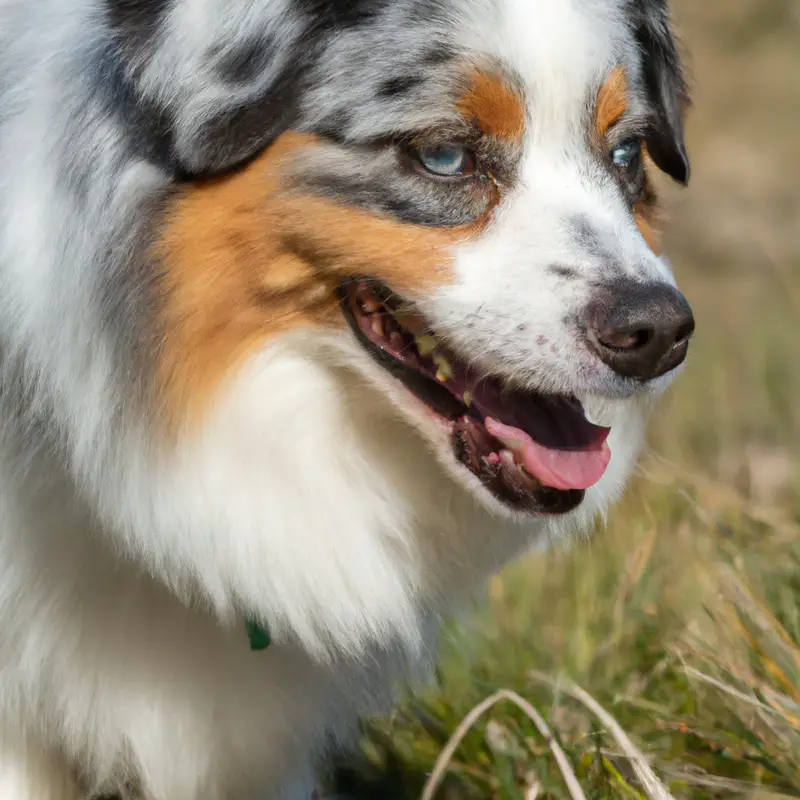
Specialized Skills Training for Australian Shepherds in Urban Search and Rescue
To train Australian Shepherds for urban search and rescue, specialized skills training is essential. These dogs need to be proficient in various tasks to effectively assist in rescue operations.
Some of the specialized skills training for Australian Shepherds in urban search and rescue includes:
- Scent Detection: Australian Shepherds undergo training to detect specific scents associated with missing persons or survivors. They are taught to differentiate between different scents and locate individuals in complex urban environments.
- Agility and Climbing: Urban search and rescue often involves navigating through challenging terrains and obstacles. Australian Shepherds are trained to climb over debris, jump over gaps, and maneuver through tight spaces to access and rescue individuals.
- Tracking: These dogs are trained in tracking tasks, enabling them to follow trails and locate missing persons in urban areas. They learn to track scent trails left by individuals in different environments, including buildings, streets, and parks.
- Communication and Signaling: During search and rescue operations, Australian Shepherds are trained to communicate with their handlers through various signals and alerts. They learn to indicate the presence of survivors, danger, or obstacles to their handlers.
- Urban Navigation: Australian Shepherds are trained to navigate and work effectively in urban environments. They learn to adapt to the noise, distractions, and unique challenges of city settings, such as busy streets, crowded areas, and tall buildings.
- Teamwork and Cooperation: These dogs are trained to work as part of a search and rescue team, collaborating with other handlers, responders, and canines. They learn to follow instructions, coordinate efforts, and work together to achieve successful outcomes.
Training Australian Shepherds for specialized skills in urban search and rescue requires dedicated trainers with expertise in search and rescue techniques. Consistent practice, positive reinforcement, and exposure to various scenarios are crucial for their development.
Through proper training, these remarkable dogs can become invaluable assets in urban search and rescue operations, saving lives and bringing hope to those in need.
Challenges and Considerations in Training Australian Shepherds for Urban Search and Rescue
Training Australian Shepherds for urban search and rescue comes with its own set of challenges and considerations. One primary challenge is acclimating them to the urban environment.
These dogs need to be comfortable navigating through crowded streets, loud noises, and various odors.
Another consideration is their herding instinct. While it can be a valuable asset, it needs to be controlled and channeled appropriately during search and rescue operations.
Training must also address their endurance and physical capabilities, as urban environments can be demanding.
Additionally, it’s important to remember that each dog is unique, so trainers need to adapt their approach to meet individual needs. Regular effective socialization and obedience training are essential to ensure their readiness and response in real-life situations.
Overall, training Australian Shepherds for urban search and rescue requires patience, dedication, and a tailored approach specific to their strengths and challenges.
Steps to Train Australian Shepherds for Urban Search and Rescue
Evaluating a Dog’s Suitability for Urban Search and Rescue
Evaluating a dog’s suitability for urban search and rescue is a critical step in the training process. To determine if a dog is suitable for this type of work, several factors need to be considered.
First, the dog’s breed and temperament play a significant role.
Australian Shepherds are known for their intelligence, agility, and trainability, making them well-suited for search and rescue work. In addition to breed characteristics, the dog’s physical fitness and health should be evaluated.
Search and rescue work can be physically demanding, so a dog should be in good overall health and have the endurance to handle long hours of searching.
A veterinarian should assess the dog’s overall fitness before beginning training. Furthermore, a dog’s drive and motivation are crucial in the search and rescue field.
They should display a strong desire to work, to learn, and to please their handler.
A dog that is easily distracted or lacks focus may struggle in urban search and rescue scenarios. Lastly, the dog’s socialization skills are essential.
In urban environments, search and rescue dogs will encounter various distractions, such as loud noises and crowds.
A dog that is comfortable in these situations and shows no aggression towards people or other animals is more likely to succeed in urban search and rescue work. By evaluating these factors, trainers and organizations can determine the suitability of a dog for urban search and rescue.
Remember, a thorough evaluation is necessary to ensure the dog’s success and safety in this demanding role.
Basic Command Training for Australian Shepherds
Basic command training is an essential part of training Australian Shepherds for any type of work, including search and rescue. It lays the foundation for their obedience and helps establish clear communication between the dog and the handler.
The key commands to focus on are sit, stay, come, down, and heel.
Teaching these commands involves using positive reinforcement techniques, such as treats and praise, to reward the desired behavior. To teach the sit command, hold a treat close to the dog’s nose and slowly move it upwards, causing the dog’s head to move up and their bottom to touch the ground.
Say “sit” as they sit, and reward them with the treat immediately.
For the stay command, start with a sit or down position, and with an open hand in front of their face, say “stay” while taking a step back. Gradually increase the distance and duration before rewarding them.
The come command involves calling the dog’s name followed by the command “come” in an upbeat and inviting tone.
Reward them with praise and treats when they come to you. The down command can be taught by first getting the dog into a sit position, then holding a treat near their nose and slowly moving it downwards towards the ground.
Say “down” as their elbows touch the floor, and reward them.
Finally, the heel command teaches the dog to walk beside the handler without pulling on the leash. Start by holding the leash with a firm grip and walking forward, saying “heel” and guiding the dog to your preferred position.
Reward them for walking calmly beside you.
Consistency, patience, and positive reinforcement are the keys to success in basic command training. Remember to keep training sessions short, frequent, and fun to maintain your dog’s interest and motivation.
Leash Training and Recall Skills for Urban Environments
Leash training and recall skills are vital for Australian Shepherds in urban search and rescue environments. To ensure their safety and effectiveness, it’s important to focus on these aspects during their training.
When it comes to leash training, consistency is key.
Start by introducing the leash gradually, allowing your dog to get used to the feeling. Use positive reinforcement techniques such as treats and praise when they walk calmly beside you.
Practice walking in different urban environments to expose them to various distractions and teach them to remain focused.
Recall skills are crucial for keeping your Australian Shepherd under control in urban areas. Start by teaching a reliable recall command, using high-value rewards to reinforce their response.
Practice recall exercises in controlled environments, gradually increasing distractions.
Always reward and praise your dog when they come to you promptly. Remember to keep training sessions short and enjoyable, incorporating playtime and breaks to keep your Australian Shepherd engaged.
Be patient and consistent in your training efforts.
With time and practice, your Australian Shepherd will develop strong leash training and recall skills, making them an asset in urban search and rescue operations.
Scent Discrimination and Area Search Training
Scent discrimination and area search training are crucial for training Australian Shepherds for urban search and rescue. During this training, dogs learn to identify and discriminate different scents, such as human scent, from a variety of distractions and environments.
They also learn to search specific areas systematically and effectively.
In scent discrimination training, dogs are exposed to various scents, including those of missing persons, and are taught to identify and locate the target scent. This involves introducing the dog to scent articles and teaching them to associate the scent with a reward.
Gradually, the difficulty level is increased, with distractions and varying environments added.
Area search training focuses on teaching dogs to search large areas systematically, covering every inch with their scent discrimination skills. Handlers guide the dogs using verbal and hand signal cues to search designated areas effectively.
Dogs are encouraged to use their natural instincts and work independently, while remaining in constant communication with their handler.
Successful scent discrimination and area search training require consistency, repetition, and positive reinforcement. It is important to start with basic scent discrimination exercises and gradually progress to more complex search scenarios.
Regular practice sessions and ongoing reinforcement of learned skills are key to maintaining proficiency in these areas.
Urban Environment Simulation and Desensitization Training
Urban environment simulation and desensitization training is a crucial part of training Australian Shepherds for urban search and rescue work. I find this training particularly important as it helps the dogs become familiar with the various sights, sounds, and smells of urban areas.
During this training, we expose the dogs to different urban environments, such as busy streets, construction sites, and crowded buildings.
We use positive reinforcement techniques to help them associate these environments with positive experiences. We gradually increase the level of difficulty by adding distractions, such as loud noises or moving objects, to simulate real-life urban scenarios.
By doing so, we ensure that the dogs remain focused and calm in potentially stressful situations.
Additionally, we work on desensitizing the dogs to common urban sights and sounds, such as sirens, honking cars, and people shouting. This helps them maintain their focus on their search and rescue tasks and prevents them from getting overwhelmed during actual operations.
Urban environment simulation and desensitization training is an ongoing process.
It’s important to regularly expose the dogs to new and challenging environments to ensure their readiness for any situation they may encounter in urban search and rescue operations. By providing this training, we are giving Australian Shepherds the tools and confidence they need to navigate and excel in urban environments, making them valuable assets in search and rescue teams.
Mock Scenarios and Mock Searches for Australian Shepherds
Training Australian Shepherds for urban search and rescue involves conducting mock scenarios and mock searches to enhance their skills and simulate real-life situations. These exercises help dogs and handlers practice their communication, problem-solving, and search techniques in a controlled environment.
Mock scenarios can include hiding a person in a designated area and having the Australian Shepherd locate them using their scent detection skills.
Additionally, setting up mock disaster areas, such as collapsed buildings, allows the dog to navigate through obstacles and locate potential victims. These realistic simulations are crucial for preparing Australian Shepherds for the challenging conditions they may encounter in urban search and rescue operations.
Regulations and Certification for Search and Rescue Dogs
Overview of Requirements for Urban Search and Rescue Teams
Urban search and rescue teams play a vital role in responding to emergencies in urban areas. These teams have specific requirements that must be met in order to effectively carry out their missions.
Some of these requirements include:
- Training and expertise: Urban search and rescue teams must have members who are trained in various aspects of search and rescue operations. This includes skills such as search techniques, first aid and medical care, and structural engineering.
- Equipment and resources: Teams need to have the necessary equipment and resources to carry out their missions. This can include tools for search and extraction, medical supplies, communication devices, and specialized vehicles.
- Collaboration and coordination: Urban search and rescue teams often work alongside other emergency response agencies, such as firefighters and law enforcement. Effective coordination and collaboration between these agencies is essential for successful operations.
- Preparedness and readiness: Urban search and rescue teams must be prepared and ready to respond to emergencies at any time. This includes regular training exercises, maintaining equipment, and staying updated on the latest techniques and procedures.
- Physical fitness and mental resilience: Search and rescue operations can be physically and mentally demanding. Team members must be physically fit and mentally resilient to handle the challenges they may encounter in the field.
Overall, urban search and rescue teams require a combination of training, resources, collaboration, preparedness, and resilience. These requirements ensure that they are able to effectively respond to emergencies in urban areas and save lives.
Certification Organizations for Search and Rescue Dogs
Certification organizations play a vital role in ensuring that search and rescue dogs are properly trained and qualified. These organizations set standards and guidelines for training, testing, and evaluating search and rescue dogs.
Some of the well-known certification organizations for search and rescue dogs include the National Association for Search and Rescue (NASAR), the American Rescue Dog Association (ARDA), and the International Rescue Dog Organization (IRO).
These organizations provide training resources, conduct certification tests, and offer ongoing education and support to handlers and teams. It is important for search and rescue dogs to be certified by recognized organizations to ensure their effectiveness and reliability in life-saving situations.
Testing and Evaluation Criteria for Search and Rescue Dogs
Testing and evaluation criteria for search and rescue dogs are essential to ensure their suitability and effectiveness in the field. The evaluation process typically includes assessing key factors such as obedience, agility, scent detection abilities, and problem-solving skills.
Dogs must demonstrate reliability, focus, and the ability to work under stressful conditions.
Physical fitness, endurance, and the ability to navigate various terrains are also evaluated. Additionally, dogs are tested for their response to commands, their ability to track human scents, and their aptitude for locating and signaling trapped individuals.
Regular evaluations and ongoing training help maintain a search and rescue dog’s skills and ensure they are always ready for deployments.
Maintaining Skills and Continuing Education for Search and Rescue Dogs
Maintaining skills and continuing education are essential for search and rescue dogs to stay sharp and effective in their roles. Regular training sessions, both in the field and in controlled environments, help them maintain their physical and mental abilities.
Continued exposure to different search scenarios and environments helps them stay adaptable and ready for any situation.
Participating in mock searches with other Search and Rescue teams allows them to practice their skills and learn from experienced handlers. Ongoing education on new techniques and advancements in search and rescue methods helps handlers stay up-to-date and ensure their dogs are well-prepared for their important work.
Final Verdict
Australian Shepherds possess a unique combination of intelligence, agility, and determination that makes them excellent candidates for search and rescue work in urban areas. Through proper training and socialization, these dogs can develop the necessary skills to successfully navigate complex urban environments and locate missing individuals.
However, it is essential to carefully evaluate each dog’s suitability for this demanding role and provide ongoing training and certification to ensure their effectiveness.
With the right guidance and support, Australian Shepherds can make a valuable contribution to search and rescue operations in urban settings.

